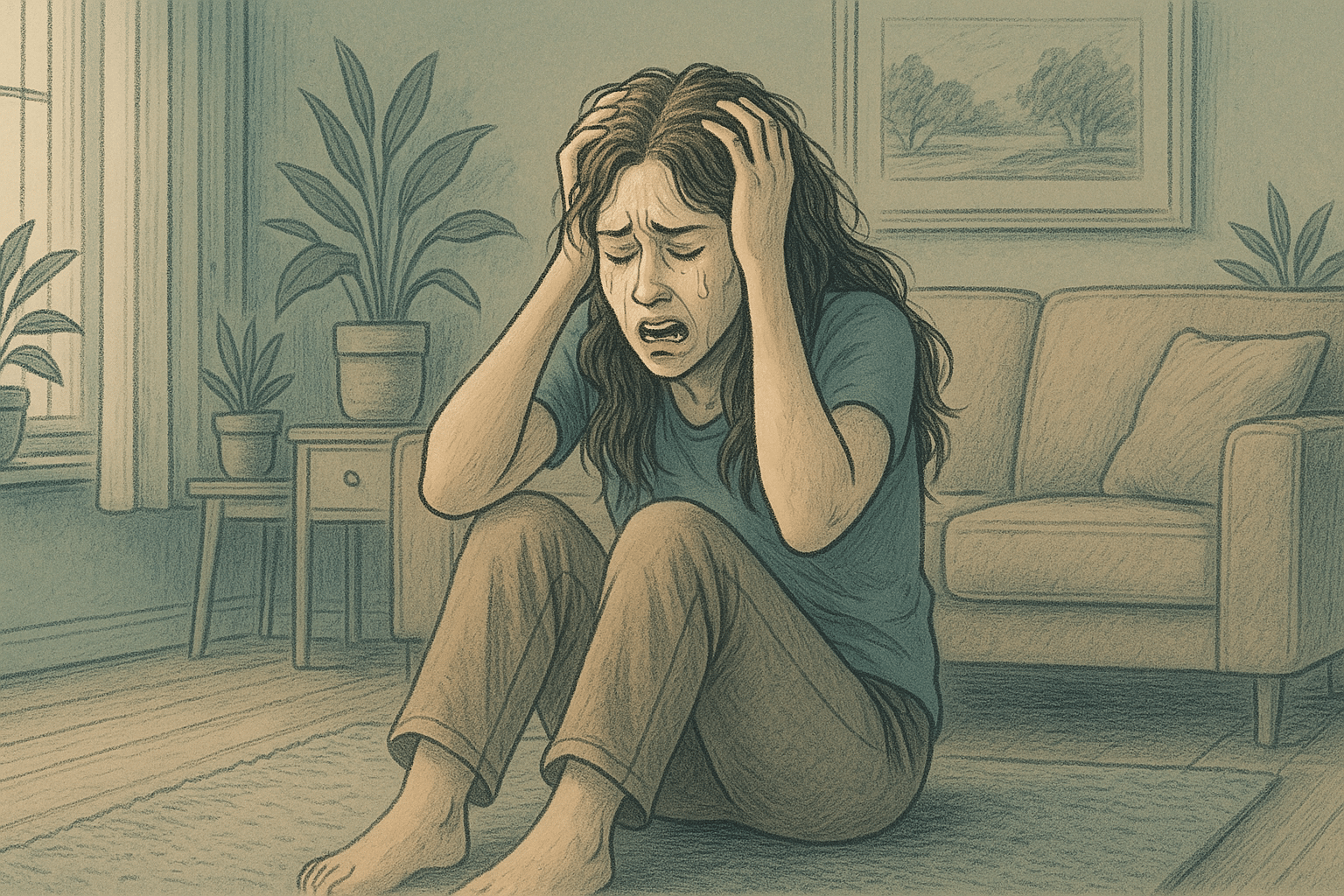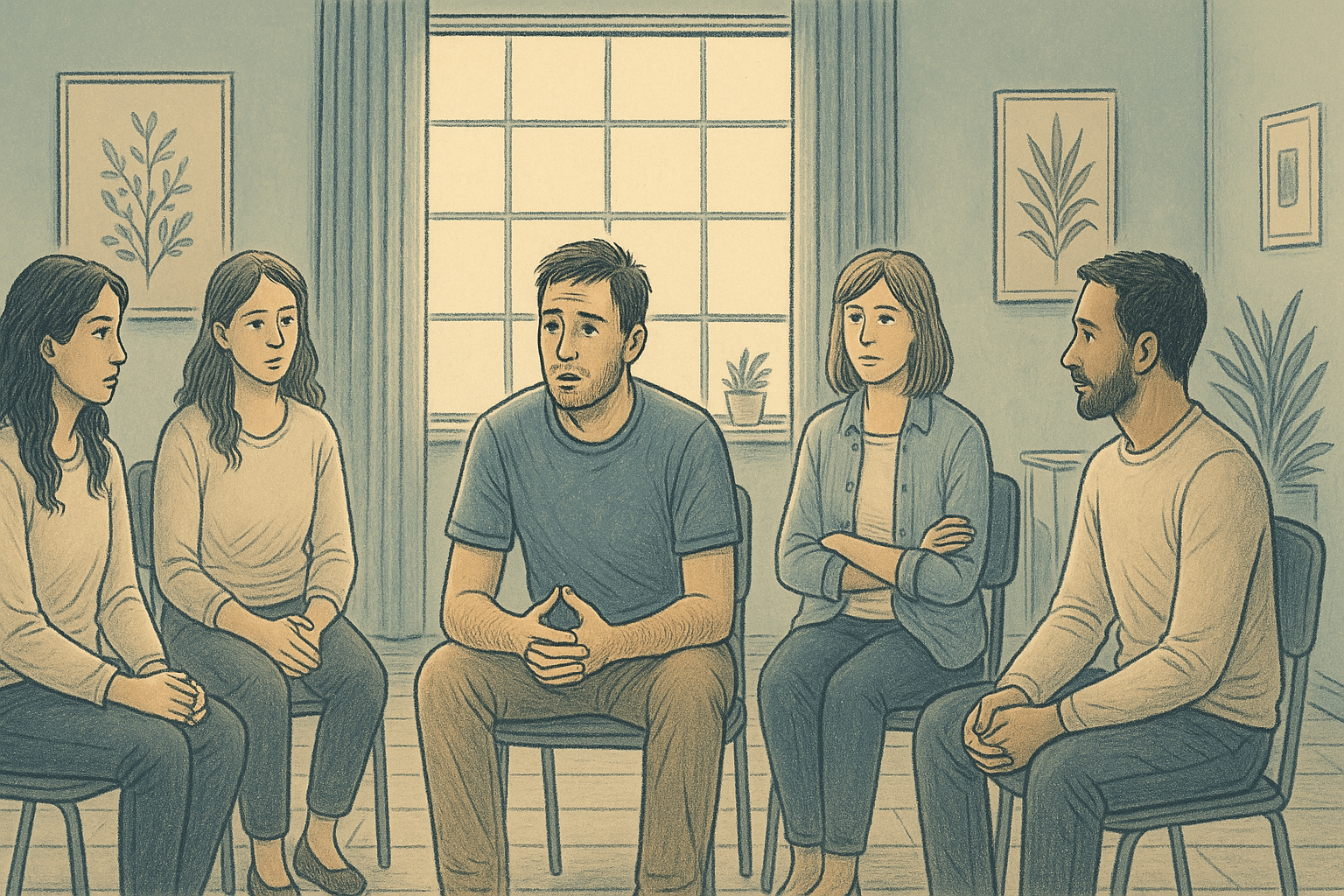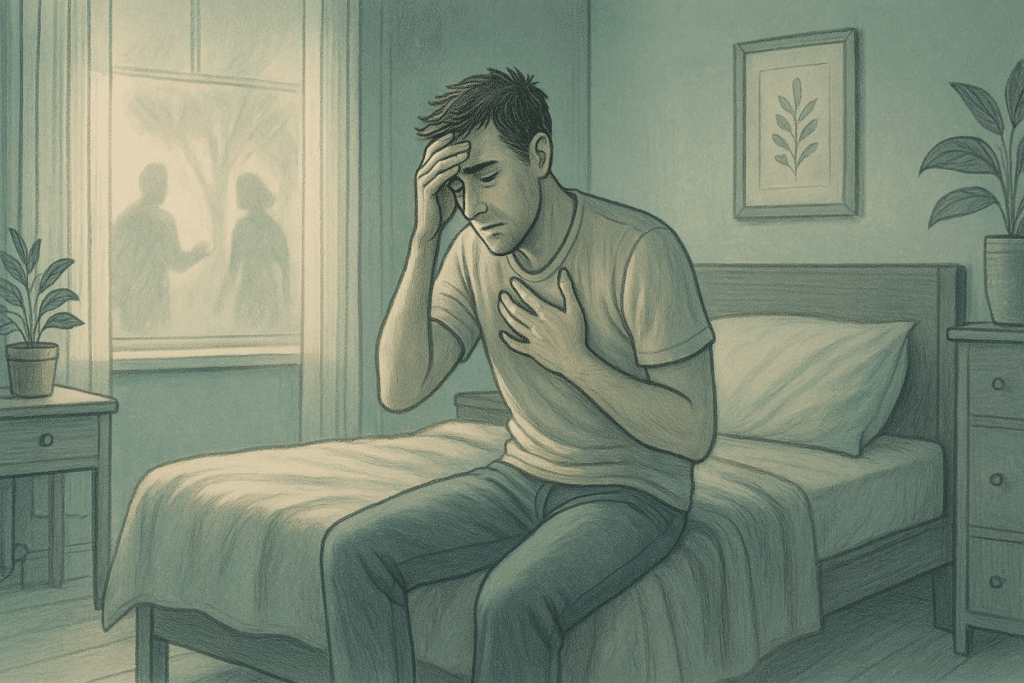Key Takeaways
- Adjustment disorder and PTSD both result from stressful events, but differ significantly in their triggers, symptom severity, and duration of symptoms.
- PTSD typically develops after experiencing or witnessing life-threatening trauma, while adjustment disorder occurs in response to major life changes or stressors.
- Treatment approaches vary between the conditions, with adjustment disorder often requiring shorter-term intervention compared to the more comprehensive treatment needed for PTSD.
- Both conditions can significantly impact daily functioning, but with proper treatment, individuals can learn to manage symptoms and reclaim their lives.
- A Mission for Michael provides specialized assessment and treatment for both conditions through comprehensive diagnostic evaluations, evidence-based therapies, and personalized treatment plans across multiple locations in California, Washington, and Virginia.
What Are Adjustment Disorder and PTSD?
Adjustment disorder and Post-Traumatic Stress Disorder (PTSD) are psychological responses to difficult life events, but they differ in important ways. Each condition has unique characteristics that affect diagnosis, treatment approaches, and recovery timelines.
Quick Definition Comparison
Adjustment disorder is characterized by an emotional or behavioral reaction to a stressful event or change in a person’s life that is considered more severe than would normally be expected. This condition typically develops within three months of the stressor and resolves within six months once the stressor has ended or the person has begun to adapt to the change.
PTSD, on the other hand, develops after exposure to a traumatic event, one that involves actual or threatened death, serious injury, or sexual violence. The trauma can be directly experienced, witnessed, or even learned about if it happened to a close family member or friend. Unlike adjustment disorder, PTSD symptoms tend to persist long-term, often for months or years after the traumatic event.
When Each Diagnosis Applies
A diagnosis of adjustment disorder typically applies when an individual experiences emotional or behavioral symptoms within three months of an identifiable stressor. These stressors might include divorce, job loss, financial difficulties, serious illness, or relocation. The key factor is that the reaction exceeds what would be considered proportionate to the stressor, causing significant distress or functional impairment.
PTSD diagnosis applies specifically in cases of exposure to traumatic events. These include but aren’t limited to combat exposure, physical or sexual assault, serious accidents, natural disasters, or witnessing violence. Unlike adjustment disorder, PTSD involves a specific pattern of symptoms that include intrusive thoughts about the trauma, avoidance behaviors, negative changes in thoughts and mood, and alterations in arousal and reactivity.
| A Mission For Michael: Expert Mental Health Care Founded in 2010, A Mission For Michael (AMFM) offers specialized mental health care across Southern California, Washington, and Virginia. Our accredited facilities provide residential and outpatient programs, utilizing evidence-based therapies such as CBT, DBT, and EMDR. Our dedicated team of licensed professionals ensures every client receives the best care possible, supported by accreditations from The Joint Commission and the California Department of Health Care Services. We are committed to safety and personalized treatment plans. Start your recovery journey with AMFM today! |
Symptom Comparison: Adjustment Disorder vs PTSD
Adjustment Disorder Symptoms
Adjustment disorder symptoms typically manifest as emotional or behavioral reactions that seem out of proportion to the stressor. These may include feeling sad or hopeless, anxiety, worry, difficulty concentrating, trouble sleeping, and withdrawing from family and friends.

Some individuals may also experience physical symptoms like headaches, stomachaches, or general aches and pains without medical cause.
What distinguishes adjustment disorder is that symptoms generally don’t reach the severity level of major psychiatric disorders. For example, while someone might experience sadness, they typically don’t meet full criteria for major depression. Similarly, anxiety symptoms rarely reach the intensity seen in generalized anxiety disorder or panic disorder.
PTSD Symptoms
PTSD symptoms are more specific and typically more severe than those seen in adjustment disorder. These symptoms fall into four main categories: intrusion symptoms, avoidance behaviors, negative alterations in cognition and mood, and alterations in arousal and reactivity.
Intrusion symptoms include distressing memories, nightmares, flashbacks, and intense psychological distress when exposed to reminders of the trauma. Avoidance behaviors involve persistent efforts to avoid thoughts, feelings, or external reminders associated with the traumatic event.
Negative alterations in cognition and mood may present as inability to remember important aspects of the trauma, persistent negative beliefs about oneself or the world, and inability to experience positive emotions. Alterations in arousal and reactivity include irritable behavior and angry outbursts, reckless or self-destructive behavior, hypervigilance, exaggerated startle response, problems with concentration, and sleep disturbance.
Overlap Areas
Despite their differences, adjustment disorder and PTSD do share some symptom overlap, which can sometimes complicate diagnosis. Both conditions can involve sleep disturbances, concentration difficulties, irritability, and social withdrawal. Additionally, both may feature anxiety symptoms and depressed mood, though these typically present with greater severity and specific trauma-related content in PTSD.
Another area of overlap involves the impact on daily functioning. Both conditions can interfere with work performance, relationships, and overall quality of life. However, PTSD typically causes more profound and pervasive functional impairment due to the severity of symptoms and their chronic nature. Understanding these overlaps while recognizing the distinguishing features helps clinicians make accurate differential diagnoses.
Duration and Timeline
Adjustment Disorder Timeframe
Adjustment disorder is, by definition, a time-limited condition. Symptoms typically develop within three months of the identified stressor and resolve within six months once the stressor has ended or the individual has begun to adapt to the new situation. This relatively brief duration reflects the condition’s nature as a temporary maladaptive response to life changes rather than a chronic condition.
PTSD Long-Term Pattern
PTSD follows a markedly different timeline. While symptoms usually begin within three months of the traumatic event, they can sometimes emerge later, even years after the trauma occurred. This delayed onset is more common in complex trauma situations or when individuals have experienced multiple traumas over time. Unlike adjustment disorder, PTSD symptoms don’t typically resolve spontaneously within a few months.

Without appropriate treatment, PTSD can become a chronic condition lasting for years or even decades.
Diagnostic Criteria for Adjustment Disorder & PTSD
Diagnosing adjustment disorder and PTSD involves a comprehensive clinical assessment that typically includes a detailed interview, review of medical and psychiatric history, and sometimes standardized psychological testing.
The assessment process must carefully consider alternative explanations for symptoms, including other mental health conditions that may present similarly. This differential diagnosis is particularly important given the symptom overlap between adjustment disorder, PTSD, major depression, anxiety disorders, and other conditions. A thorough evaluation also considers cultural factors that might influence symptom expression and interpretation.
Treatment Approaches
Therapy for Adjustment Disorder
Treatment for adjustment disorder typically focuses on helping individuals cope with the stressor and develop adaptive responses to life changes. Short-term psychotherapy approaches are often effective, including Cognitive Behavioral Therapy (CBT), problem-solving therapy, and brief interpersonal therapy. These interventions help individuals identify negative thought patterns, develop coping strategies, and build resilience in the face of life stressors.

Group therapy can also be beneficial, particularly when participants share similar stressors such as job loss, divorce, or medical illness.
PTSD Treatment Methods
PTSD typically requires more intensive and trauma-focused treatment approaches. Evidence-based psychotherapies for PTSD include Prolonged Exposure (PE), Cognitive Processing Therapy (CPT), and Eye Movement Desensitization and Reprocessing (EMDR). These treatments specifically address trauma memories, beliefs, and avoidance behaviors that maintain PTSD symptoms.
Medication Options
Medication plays different roles in treating adjustment disorder versus PTSD. For adjustment disorder, medications are typically used on a short-term basis to target specific symptoms like insomnia, anxiety, or mood disturbances.
For PTSD, medication, selective serotonin reuptake inhibitors (SSRIs) help reduce symptoms across all symptom clusters. Other medication options include serotonin-norepinephrine reuptake inhibitors (SNRIs), prazosin for trauma-related nightmares, and mood stabilizers for emotional regulation difficulties.
Self-Help Strategies
While professional treatment is important for both conditions, self-help strategies can complement formal interventions. For adjustment disorder, stress management techniques, regular exercise, adequate sleep, social connection, and mindfulness practices can all support recovery.
Self-help approaches for PTSD include many of the same wellness practices but may need to be modified to accommodate trauma symptoms. For instance, trauma-sensitive mindfulness practices avoid triggering trauma memories, and exercise routines might need to be adjusted to avoid heightened arousal. Grounding techniques, progressive muscle relaxation, and self-compassion practices can be particularly beneficial for managing PTSD symptoms between therapy sessions.
Expert PTSD and Adjustment Disorder Treatment at AMFM

At A Mission for Michael, our comprehensive assessment process ensures accurate diagnosis, distinguishing between these conditions to provide the most appropriate care pathway.
Our trauma-informed treatment programs utilize evidence-based interventions specifically designed for each condition’s unique characteristics. For PTSD, we offer specialized therapies including Cognitive Processing Therapy, EMDR, and Prolonged Exposure, delivered by clinicians extensively trained in trauma treatment.
Our integrated approach combines individual therapy, group support, medication management when appropriate, and holistic interventions across our California, Virginia, and Washington locations. If you’re struggling with adjustment difficulties following major life changes or experiencing the persistent symptoms of PTSD, our compassionate clinical teams provide the specialized expertise necessary for recovery.
With both inpatient and outpatient programs available, we ensure appropriate treatment intensity matching your specific needs and circumstances, supporting your journey toward healing and renewed quality of life.
Frequently Asked Questions
Can someone have both adjustment disorder and PTSD simultaneously?
Yes, it’s possible for someone to have both conditions concurrently, though this is relatively uncommon. For example, a person might develop PTSD after a serious car accident and then later experience adjustment disorder in response to a job loss or divorce. In such cases, treatment would need to address both conditions, typically prioritizing the PTSD symptoms while also providing support for managing the adjustment-related stressor.
Why is accurate diagnosis important for treatment success?
Accurate diagnosis ensures that treatment approaches match the specific condition and its underlying mechanisms. PTSD requires trauma-focused interventions that directly address traumatic memories and their impact, while adjustment disorder treatment focuses more on coping with current stressors and life changes. Misdiagnosis can lead to ineffective treatment, potentially prolonging suffering and complicating recovery.
Can either condition resolve without professional treatment?
Adjustment disorder may resolve without formal treatment as individuals naturally adapt to stressors over time or as stressors resolve. However, professional help can significantly accelerate this process and prevent progression to more serious conditions. PTSD is less likely to resolve completely without intervention, though symptoms may gradually diminish for some individuals. Natural recovery is less common with more severe trauma, prior trauma history, or limited social support.
How does AMFM’s approach differ for treating adjustment disorder versus PTSD?
AMFM tailors treatment approaches based on accurate diagnosis and individual needs. For adjustment disorder, we typically provide shorter-term interventions focusing on coping strategies, stress management, and adaptation support through counseling and brief therapeutic approaches.
For PTSD, our comprehensive trauma-informed care includes specialized evidence-based therapies like CPT, EMDR, and prolonged exposure, often requiring more intensive and extended treatment.









